PHONE
555-555-5555
ADDRESS
Dorothy Day Guild
1011 First Avenue, Room 787
New York, NY 10022
Dorothy Day Guild May 2023 Missive
Dear friends,
Hello from all of us at the Dorothy Day Guild! We are so excited to update you on recent Dorothy-related events and share some upcoming Guild news with you this month. May marks many significant anniversaries for all of us, particularly the 90th birthday of the Catholic Worker movement. Ninety years ago this month, Dorothy Day and Peter Maurin published the first issue of The Catholic Worker (still available for just a penny a copy). In honor of this anniversary, Jerry Windley-Daoust has assembled a collection of articles and reflections looking back on the origins of the Catholic Worker movement and ahead to its future. Check out these writings by Dorothy and other contemporary voices here. Many blessings on this anniversary to Catholic Workers past and present, and to everyone who has worked to "build a new world in the shell of the old." As Dorothy wrote in The Long Loneliness, “It all happened while we sat there talking, and it is still going on.”
Ferry Updates
The Dorothy Day set sail for its inaugural voyage on April 28th from the St. George Ferry Terminal on Staten Island. It was a joy to celebrate with so many of you on such a beautiful afternoon. Many thanks to everyone who contributed their labor and creative talents to the opening ceremony and prayer service bookending the ride. We were particularly moved by DOT Commissioner Ydanis Rodriguez’s (bilingual!) reflection on justice, activism, and the dignity of the poor, as well as The Dirty Rotten System band’s rousing rendition of “If I Had a Hammer (Ferry)”! If you weren’t able to join us in person, you can view the livestream of the opening ceremony here: Dorothy Day Staten Island Ferry Inaugural Ride
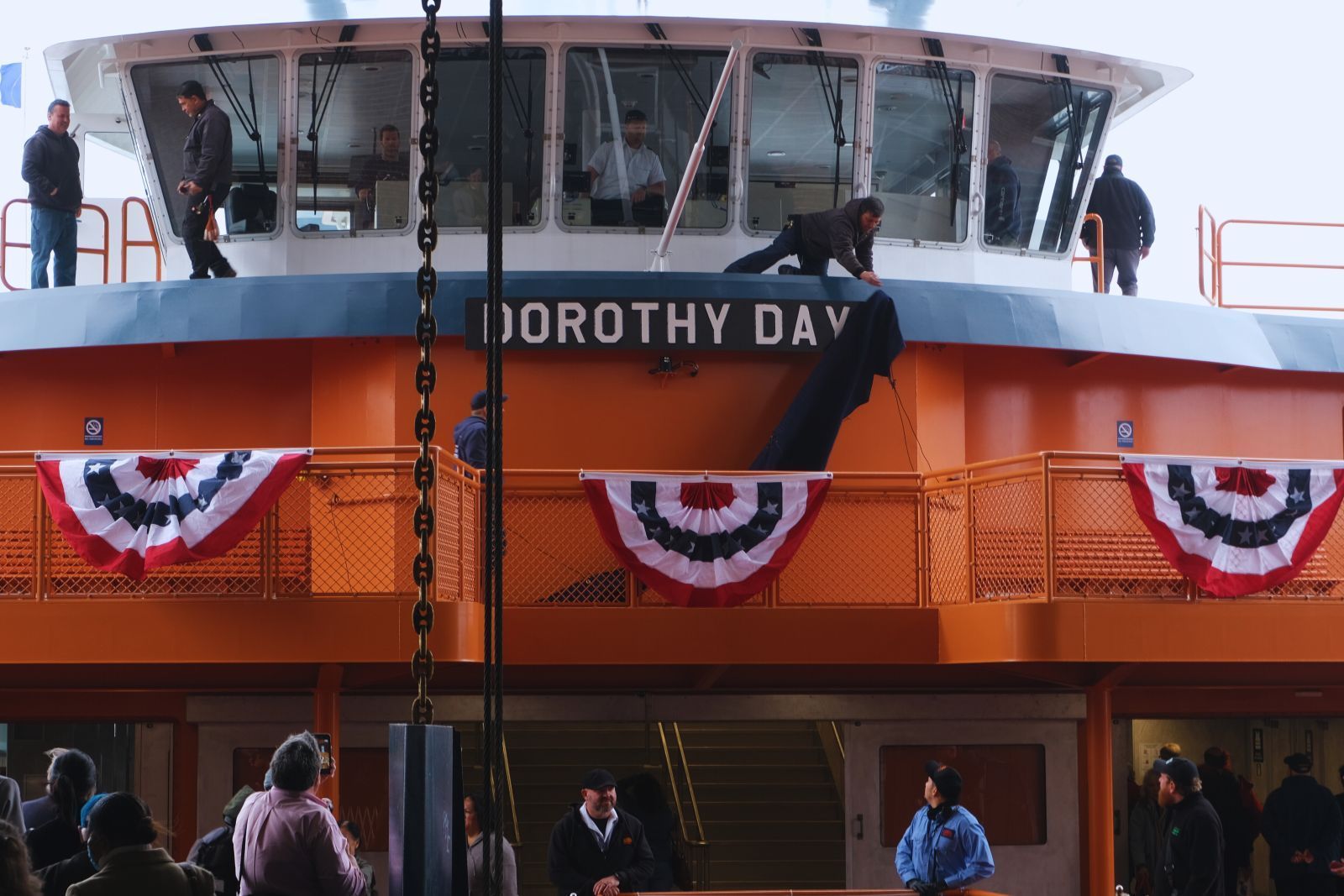
We’re sure Dorothy would have been proud to see many journalists present at the ferry station! Check out some of the ferry press at Our Sunday Visitor, The Irish Echo, The Tablet, and America.
We’re so happy that the Dorothy Day is now running its regular route between Staten Island and Manhattan, two locations that were the site of so many significant events and experiences throughout Dorothy’s life. To see the full album of pictures from the event, please visit our Facebook page, and if you get a chance to ride the ferry yourself, be sure to tag us on Facebook and Twitter!
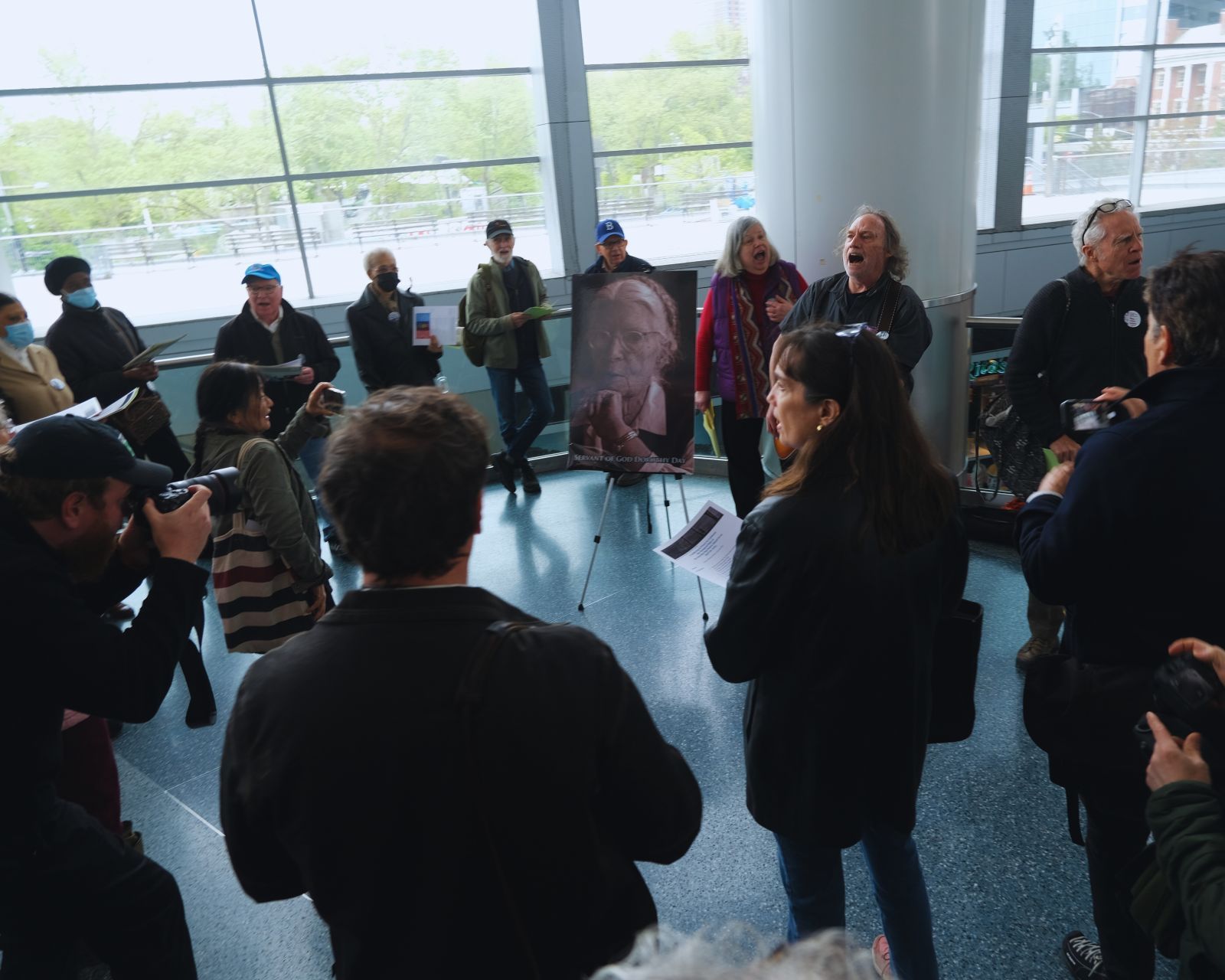
Membership News and Upcoming Events
We’re moving! The Guild’s offices will officially move up to the Bronx next month to Manhattan College’s Dorothy Day Center for the Study and Promotion of Social Catholicism. We are so grateful for the many years that Catholic Charities and the Archdiocese of New York have extended space to us at 1011, and we’re excited about the possibilities offered by a new home on a college campus. If you would like to make a contribution to support the move, or renew your annual membership with the Guild, please click here.
In June, the Guild will also meet for its annual in-person retreat to pray together as well as welcome new advisory board members and develop plans for promoting Dorothy’s cause over the course of the next year. The official Roman phase of the canonization cause has begun, but our work is certainly not over! We could not carry on this work without you. Your financial support, as well as your commitment to prayer and action carried out “in the spirit” of Dorothy is bringing her message of nonviolence, voluntary poverty, and deep love for the poor and vulnerable to a world that needs her legacy more than ever. Thank you so much for continuing to take part in and support the work of the Guild.
Other Canonization Causes of Note
Many of our Guild members are also active and interested in other American canonization causes, particularly those of the “Saintly Six,” the Black American priests, sisters, and laity whose causes are currently in process. Ralph Moore, Jr. details some of the factors at play here Although there are also active Guilds for Fr. Augustus Tolton, Mother Mary Elizabeth Lange, Mother Henriette DeLille, Ms. Julia Greeley, Mr. Pierre Toussaint, and Sister Thea Bowman, these causes have not received the financial support or attention from the wider Church merited by the heroic virtue of the Saintly Six.
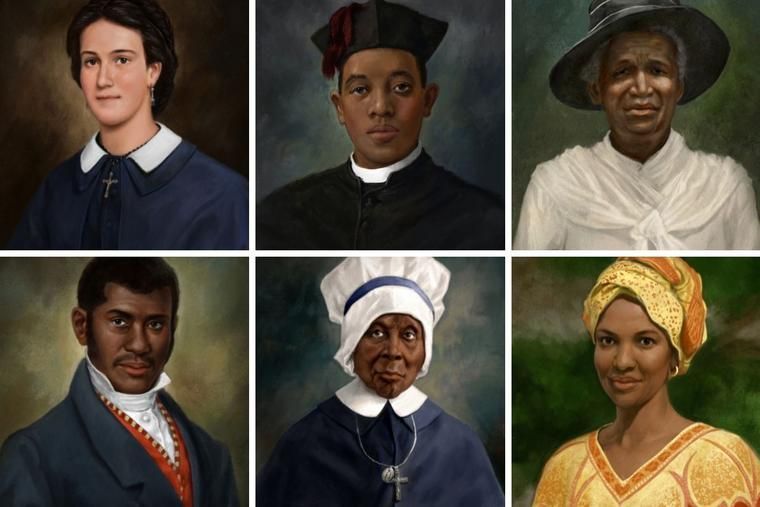
Throughout her life, Dorothy was deeply concerned with racial justice, and as a believer and participant in the communion of saints, we are certain she would be eager to promote these causes! We encourage all members of the Dorothy Day Guild to pray for the canonization of each member of the Saintly Six. You can learn more about these candidates and how to become more involved in their canonization causes by visiting the website for each of their Guilds. We’ll keep you posted as we hear news from them, and stay tuned for future educational events that connect Dorothy’s legacy with those of the Saintly Six! For now, check out a new children’s book on Julia Greeley and please join us in congratulating the members of the Mother Mary Lange Guild and the Oblate Sisters of Providence on beginning the next state of her canonization cause– the Vatican recently approved her positio, opening the way for her to be declared “Venerable”. Mother Mary Lange, pray for us!
Peter Maurin
Today, May 9th, marks what would be the 146th birthday of Catholic Worker co-founder Peter Maurin. Peter’s mentorship of Dorothy helped her to integrate her solidarity with the poor and commitment to nonviolence with her newfound Catholic faith. Peter’s vision of greater connection to each other and the earth in farming communes and agronomic universities prefigured the theological insights of Pope Francis’ Laudato Si’, and is taking on new life in a new generation of Catholic Worker farming communities. In honor of Peter Maurin’s birthday, the podcast “Coffee With Catholic Workers” has just released a conversation with Lincoln Rice, Peter Maurin scholar and member of the Casa Maria Catholic Worker community in Milwaukee. In this conversation, Lincoln outlines Maurin’s thought on labor and where his ideas converged with and differed from Dorothy’s. Check it out here, and also be sure to take a look at Lincoln’s latest book, The Forgotten Radical Peter Maurin: Easy Essays from the Catholic Worker, available here.
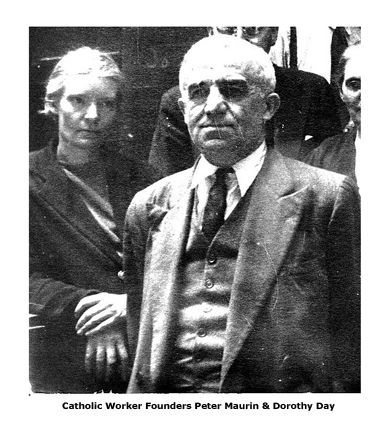
Here, we would also like to share with you a reflection from Dorothy’s column in the May 1965 issue of The Catholic Worker.
“First of all, it must be emphasized that Peter Maurin was a deeply religious man. He never missed daily Mass, and many a time I saw him sitting quietly in the church before or after Mass… He never rushed, but walked in most leisurely fashion, his hands clasped behind his back, ruminating no doubt, paying little attention to shops (except for bookshops) or to passersby or even to traffic.
Work, according to Peter was as necessary to man as bread, and he placed great importance on physical work. I can remember a discussion he had with the great scholar Dom Virgil Michel, who was the pioneer of the liturgical movement in this country.
“St. Benedict emphasized manual labor, as well as intellectual,” Peter said. “Man needs to work with his hands. He needs to work by the sweat of his brow, for bodily health’s sake. We would have far less nervous breakdowns if men worked with their hands more, instead of just their heads.”
Peter Maurin’s teaching was that just as each one of us is responsible for the ills of the world, so too each one of us has freedom to choose to work in “the little way” for our brother. It may seem to take heroic sanctity to do so go against the world, but God’s grace is sufficient, He will provide the means, will show the way if we ask Him. And the Way, of course, is Christ Himself. To follow Him.”
Many blessings and great thanks to all who are living out the Green Revolution in their homes, communities, and neighborhoods!
Please stay in touch, and keep a lookout for the next issue of our newsletter, “In Our Time,” coming to your inbox next month. “In Our Time” will be published quarterly, and you’ll also continue to receive these shorter monthly updates, so if you like what you’re reading, forward this email to a friend and encourage them to sign up for our mailing list linked here.
As always, we’re grateful to be on this journey with you!
Yours,
Dr. Casey Mullaney, on behalf of the Dorothy Day Guild
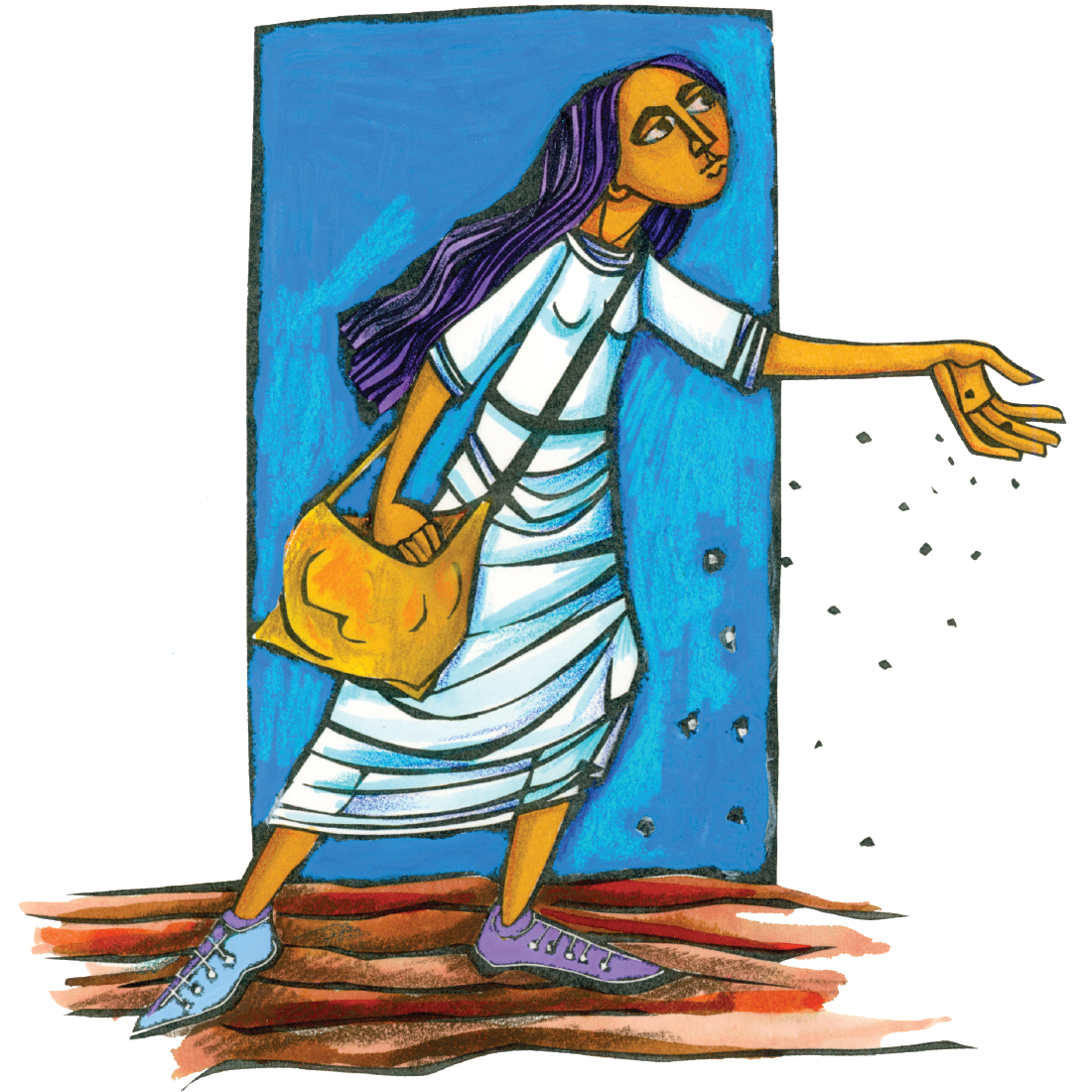
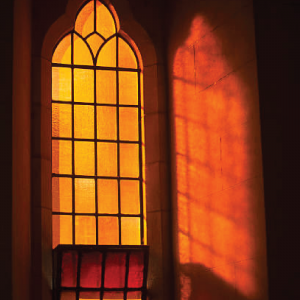
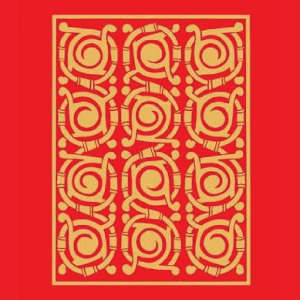
A Woman of Conscience, a Saint for Our Time
The Dorothy Day Guild supports and advances the cause for canonization of Dorothy Day, initiated by the Archdiocese of New York as a saint by the Roman Catholic Church, and promotes, for the benefit of all people interested in social justice, awareness of Dorothy Day, her writings, the Catholic Worker Movement she co-founded, and her life and witness to the Gospel.
QUICK LINKS
© 2023 All Rights Reserved | Dorothy Day Guild | This site is powered by Neon One

